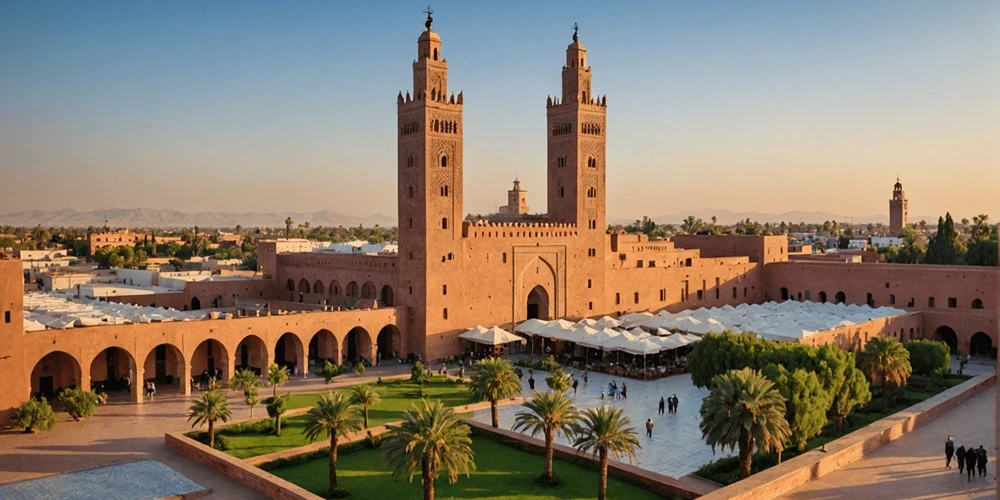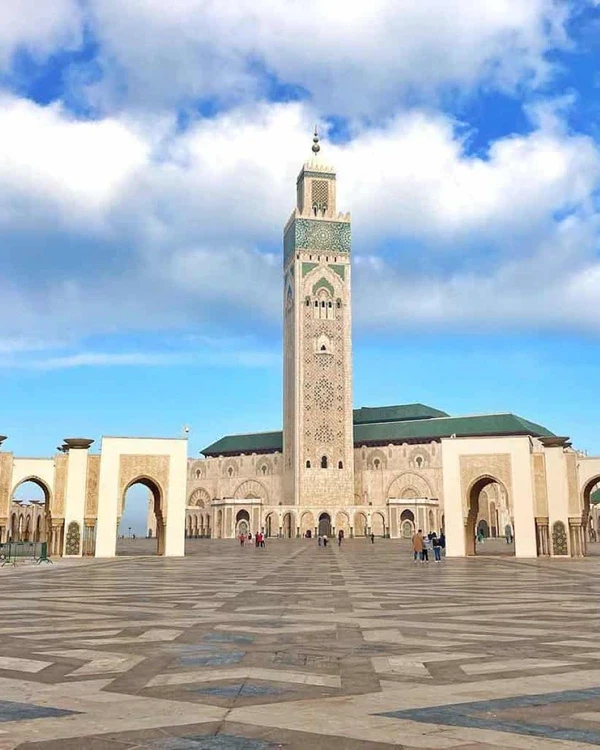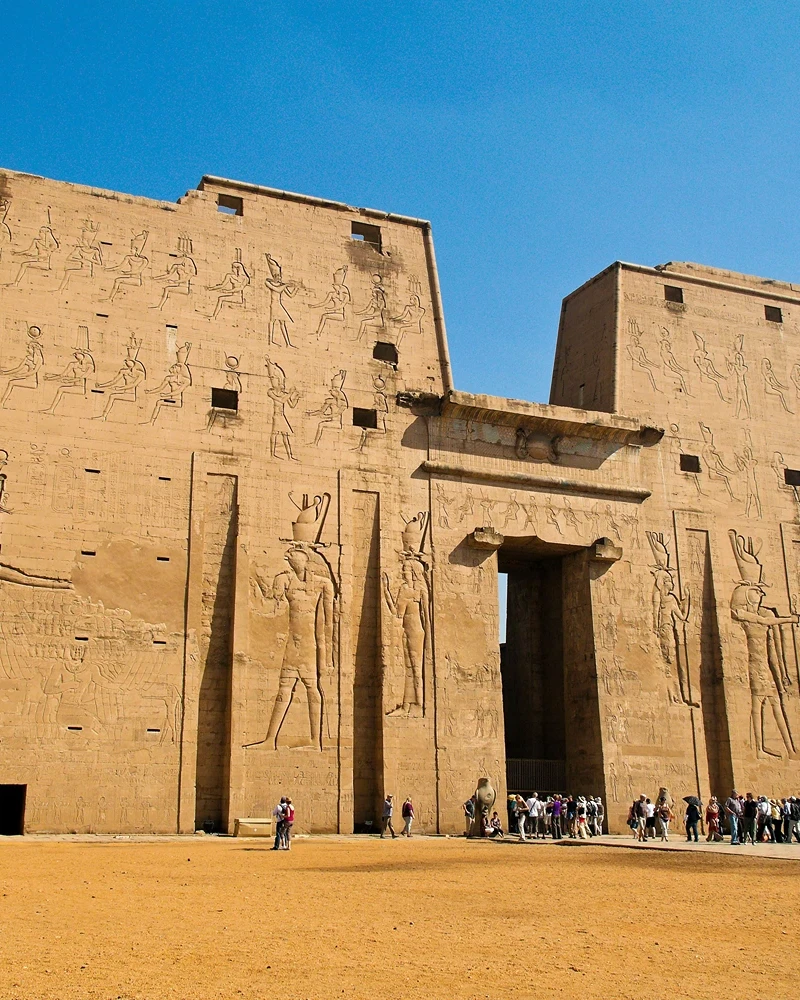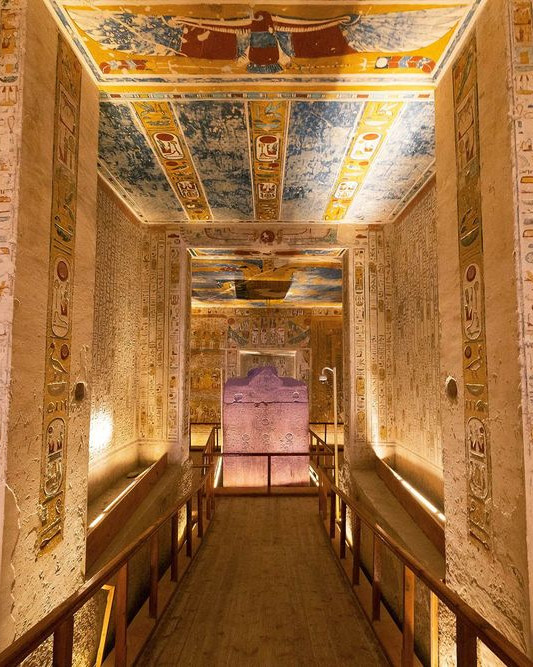Is it possible for a single building to encapsulate the legacy of an entire era? The Koutoubia Mosque in Marrakech, built during the 12th century by the Almohad Caliph Yaqub al-Mansur, is far more than an architectural marvel. Constructed with sandstone from Mount Gueliz, it stands as a testament to the ingenuity and cultural richness of the Almohad period. This article delves into the mosque’s historical background, offering insights that illuminate its enduring significance. Whether you’re a history enthusiast or an expat in search of deeper cultural connections, you’ll find the Koutoubia Mosque’s story compelling.
Historical Background of the Koutoubia Mosque
The Koutoubia Mosque was constructed in the 12th century by the Almohads under the reign of Caliph Yaqub al-Mansur. Built using sandstone sourced from Mount Gueliz in Marrakech, the mosque reflects the architectural style and materials typical of the period. Its name, derived from the Arabic word for bookseller, indicates the presence of an ancient book market that once thrived next to it.
The Koutoubia Mosque holds significant historical importance as it was the first mosque constructed by the Almohad dynasty. This era marked a period of architectural innovation and cultural flourishing in the region. The mosque not only served religious purposes but also stood as a symbol of Almohad power and influence.
Key Historical Milestones:
- Built in the 12th century
- Named after the bookseller market
- First Almohad mosque
- Constructed with Mount Gueliz sandstone
- Symbol of Almohad architecture
The mosque’s role extended beyond being a place of worship; it became a cultural and social hub. Its construction set a precedent for Almohad architecture, influencing subsequent structures in the region. The Koutoubia Mosque remains a critical piece of Marrakech’s historical tapestry, reflecting the city’s rich past and enduring legacy.
Architectural Features of the Koutoubia Mosque
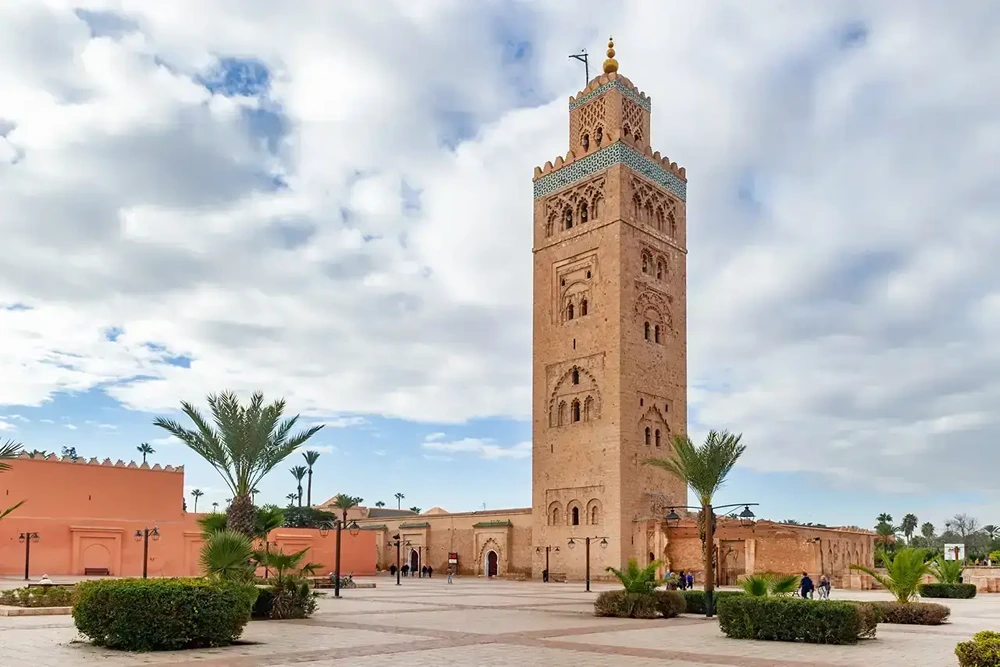
Islamic architecture is renowned for its intricate detail, symmetrical designs, and spiritual symbolism. The Koutoubia Mosque, a prime example of Almohad architecture, boasts features that embody these principles while also serving practical purposes for worship and community activities.
The Minaret
The Koutoubia Mosque’s minaret stands at an impressive 77 meters (253 feet) tall, making it a prominent landmark visible from every rooftop in Marrakech. This towering structure is adorned with intricate geometric and floral patterns, typical of Almohad design. The minaret includes a ramp that allows the muezzin to ascend easily, and it houses six rooms stacked vertically.
The Prayer Hall
The prayer hall of the Koutoubia Mosque is designed to accommodate up to 25,000 worshippers. Its layout is spacious and open, allowing for large congregations to gather for daily prayers and special religious events. The hall’s perpendicular shape is a common feature in western Islamic minarets, optimizing space and acoustics for worship.
Decorative Elements
One of the standout features of the Koutoubia Mosque is its decorative elements. The mosque is adorned with intricate geometric and floral patterns that are not only visually stunning but also rich in symbolic meaning. These patterns are meticulously crafted, reflecting the high level of artistry and craftsmanship that went into the mosque’s construction. Other decorative elements include ornate calligraphy and mosaic tilework, adding layers of beauty and complexity to the structure.
| Feature | Description |
|---|---|
| Minaret Height | 77 meters (253 feet) tall |
| Minaret Patterns | Intricate geometric and floral designs |
| Prayer Hall Capacity | Accommodates up to 25,000 worshippers |
| Minaret Structure | Contains six vertically stacked rooms |
| Decorative Elements | Geometric, floral patterns, calligraphy, mosaic tilework |
Cultural Significance of the Koutoubia Mosque
The Koutoubia Mosque is considered a masterpiece of Islamic architecture and stands as a symbol of Marrakech. Its towering minaret and intricate designs reflect the rich Islamic heritage of Morocco, making it a prominent landmark near the bustling Jemma el-Fnaa square.
The mosque holds significant cultural and historical importance. It represents the era of the Almohad dynasty, which brought architectural innovation and cultural prosperity to the region. The name “Koutoubia” is derived from the Arabic word for bookseller, a nod to the historical book market that once surrounded the mosque. This illustrates the mosque’s role not just as a religious site but also as a center of learning and culture.
As a prominent example of North African mosques, the Koutoubia Mosque has influenced the architectural styles of other religious sites in the region. Its design elements and structural features have been emulated in various mosques, establishing a legacy of architectural excellence.
The mosque also plays a vital role in religious ceremonies and Islamic holidays. It serves as a gathering place for worshippers during significant events such as Ramadan and Eid. The surrounding gardens and stalls often come alive with activity, reflecting the mosque’s enduring role in the community.
Visiting the Koutoubia Mosque: Practical Information
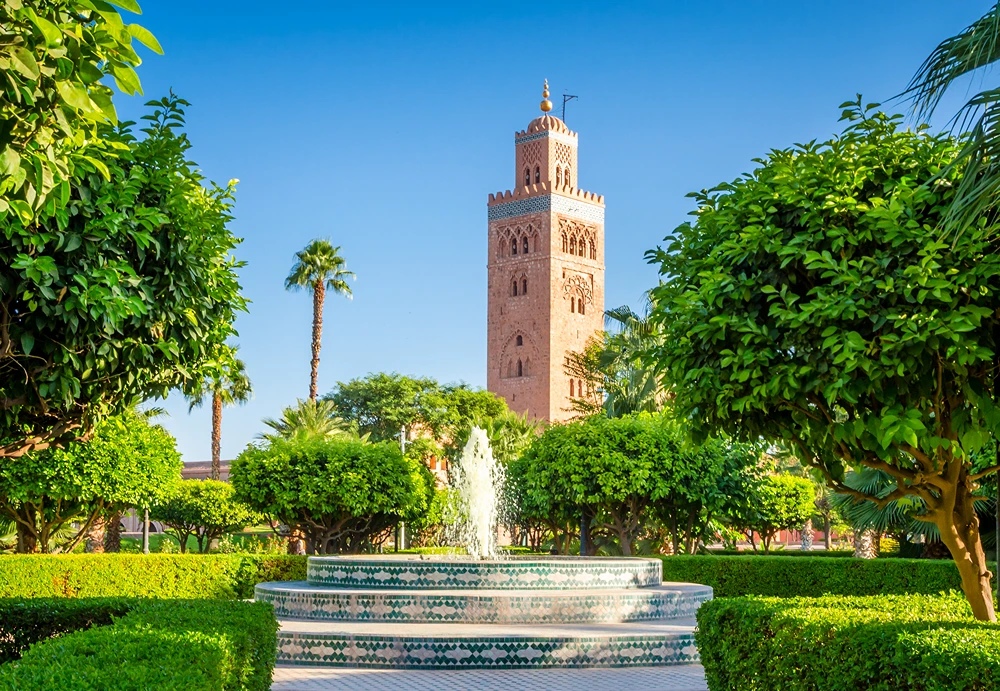
The Koutoubia Mosque is a must-see landmark in Marrakech. While it is primarily a place of worship, its exterior and surrounding gardens offer plenty for visitors to explore. Understanding the visiting guidelines will enhance your experience.
Opening Hours and Accessibility
The mosque is open for visits from 9:00 AM to 6:00 PM, with the exception of prayer times. Non-Muslims are not permitted to enter the mosque itself but can enjoy the views of its magnificent exterior and the peaceful gardens that surround it. The public access areas provide ample opportunities for photography and relaxed walks.
Guidelines for Non-Muslim Visitors
Non-Muslims can only view the Koutoubia Mosque from the outside. To respect local customs and religious practices, visitors should adhere to a modest dress code. This means covering shoulders and knees. By following these guidelines, you can ensure a respectful and enjoyable visit.
Nearby Attractions
The Koutoubia Mosque is located near several other notable attractions, making it easy to plan a comprehensive sightseeing tour. Here are three nearby sites worth visiting:
- Saadian Tombs
- Bahia Palace
- Marrakech Museum
These landmarks offer additional insights into the rich history and culture of Marrakech, making your visit to the Koutoubia Mosque and its surroundings even more enriching.
Interesting Facts and Legends of the Koutoubia Mosque
The Koutoubia Mosque is not just a remarkable piece of architecture; it also has intriguing connections with other historical structures. One of the most fascinating aspects is its relationship with two sister minarets: the Hassan Minaret in Rabat and the Giralda Tower in Seville. These sister structures share similar architectural styles, showcasing the spread of Almohad influence across regions.
A unique feature of the Koutoubia minaret is the white flag that is raised during the call to prayer. This practice is symbolic and serves as a visual cue for worshippers, enhancing the mosque’s role in the daily lives of the local Muslim community. Additionally, the minaret includes six rooms stacked vertically, which is an unusual architectural choice that adds to its uniqueness.
- Two sister structures
- White flag during call to prayer
- Name origin from bookseller market
- Painted by Winston Churchill
- Six rooms in the minaret
The name “Koutoubia” is derived from the Arabic word for bookseller, reflecting the historical book market that once surrounded the mosque. This cultural insight highlights the mosque’s historical significance as a center for learning and knowledge. Interestingly, the Koutoubia Tower also caught the eye of Winston Churchill, who painted it during one of his visits to Marrakech, further cementing its place in both local and global history.
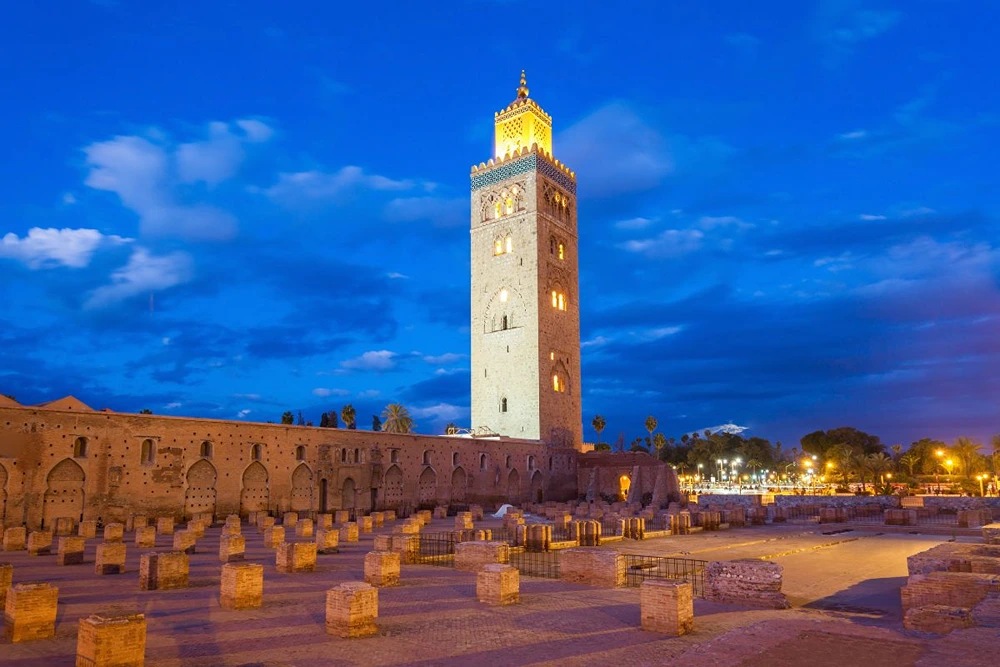
Final Words
Delving into the historical background of the Koutoubia Mosque, the article covered its 12th-century origins under the Almohad Caliph Yaqub al-Mansur and the significance of its construction materials.
Examining the architectural features, the minaret’s striking design, the vast prayer hall, and the intricate decorative elements stood out as defining characteristics.
The cultural significance of the mosque as a symbol of Islamic heritage and its impact on Moroccan culture was evident. Additionally, practical visiting information highlighted the importance of respecting local customs and dress codes.
Ultimately, the Koutoubia Mosque stands not just as an architectural marvel, but also as a cultural and historical emblem of Marrakech.
FAQ
Are non-Muslims allowed in Koutoubia Mosque?
Why is Koutoubia Mosque famous?
Is Koutoubia Mosque damaged?
Can tourists visit Koutoubia?
What are the prayer times at Koutoubia Mosque?
What are the Koutoubia Mosque’s opening hours?
What is the entrance fee for Koutoubia Mosque?
How can I get tickets for Koutoubia Mosque?
What happened to Koutoubia Mosque after the earthquake?
Is Koutoubia Mosque currently closed?
Top Attractions
What could inspire a king to commission a mosque so unique…
Why would an ancient civilization dedicate 180 years to…
Why did the ancient Egyptians choose a secluded desert…


